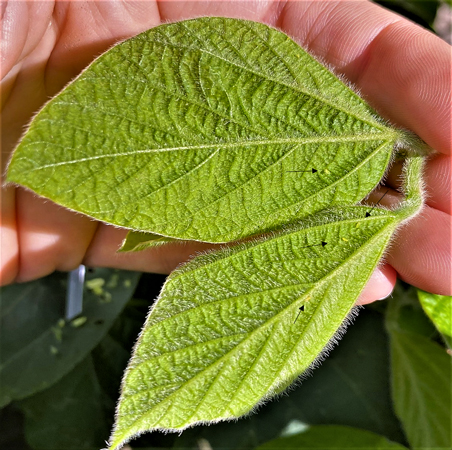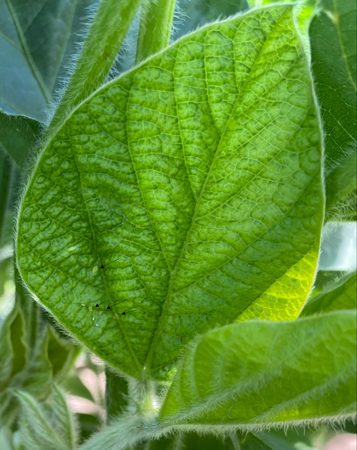Soybean aphids have been detected for the first time this year in Riley County, Kansas (Figures 1 and 2). Soybean aphids have migrated into the state every year since 2002. These are very small green to lime-green aphids with 2 black cornicles (tailpipes). They are the only aphids that may actually colonize soybeans in Kansas, and thus do any damage. They are usually first detected by noticing ants on the leaves in the canopy, as ants seem to be exceedingly good at detecting the honeydew produced by these aphids.
Since 2002, soybean aphids have only reached densities justifying insecticide applications in 2 or 3 years. These aphids seem to do best in cooler temperatures, so if the average August temperatures persist again this year in Kansas these aphids should not become a problem. However, if August temperatures are cooler than average, soybean aphids can reach treatable densities quite quickly. Soybean producers should monitor for soybean aphids, especially if August/September temperatures are cooler than average.
For management guidelines, please refer to the KSRE publication “Soybean Insect Management 2023” at https://bookstore.ksre.ksu.edu/pubs/MF743.pdf

Figure 1. Tiny aphids were identified on soybeans in Riley County, Kansas. Photo by Rene Hessel, K-State Research and Extension.

Figure 2. Varied size aphids on soybeans in Riley County, Kansas. Photo by Rene Hessel, K-State Research and Extension.
Jeff Whitworth, Extension Entomologist
jwhitwor@ksu.edu
Tags: soybeans insects soybean aphids aphids